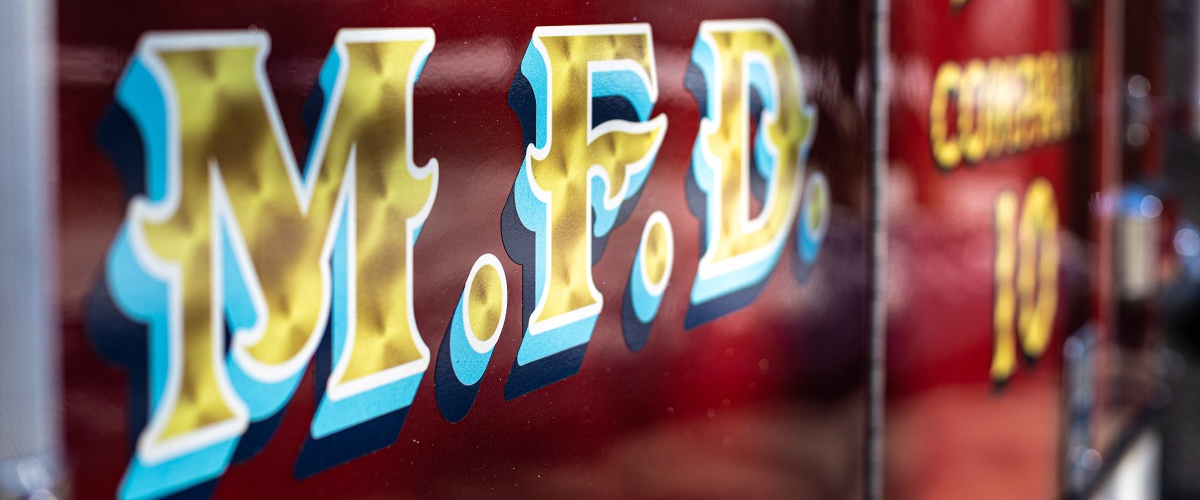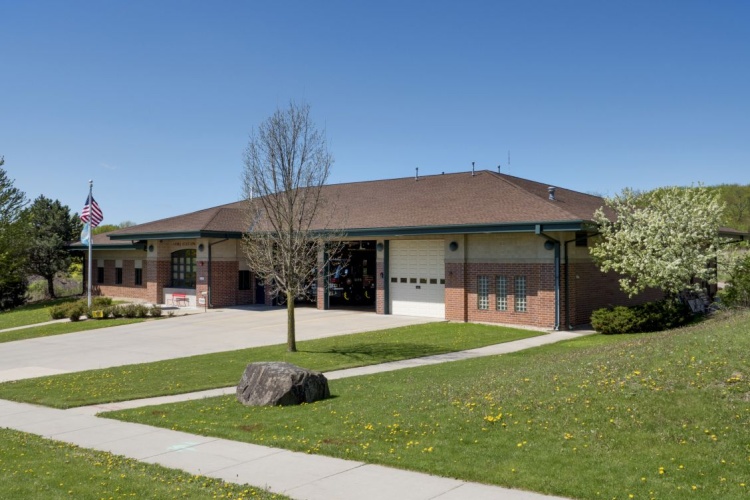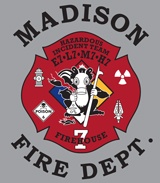Station 7 is located on Madison's west side. It is staffed daily with eight firefighters and two firefighter/paramedics who work 24-hour shifts.
Station 7 houses Engine Company 7, Ladder Company 7, and Medic 7. The firehouse was built in 1997 to accommodate Madison's development to the west and replaced the older firehouse located on Raymond Road.
Station 7 added the City's eighth ambulance in April 2010 and became a double company when it added Ladder 7 in November of that year.
Station 7 also houses one of the State of Wisconsin's Regional Hazmat Response Teams. Firefighters based at Station 7 are highly-trained Hazardous Materials Technicians who will respond throughout the State to aide in chemical spill mitigation and containment. All members are also trained in Weapons of Mass Destruction response.
Equipment
- Engine 7 – a 2012 Pierce Quantum-H. It has a 1250 gallons-per-minute fire pump and a complement of ground ladders, fire hose, and tools. In addition, Engine 7 carries emergency medical equipment including a defibrillator, oxygen, and immobilization gear.
- Ladder 7 – Madison's second platform truck is a 2018 Pierce Quantum Aerial Platform with a TAK4 suspension featuring a 100-foot aerial platform ladder with water tower. The bucket gives firefighters a safe working area to perform rescues and roof ventilation operations as well as other firefighting activities. It also carries ground ladders, has a 1500-gallons-per-minute pump with 300-gallon booster tank, attack and supply fire hose, ventilation equipment, hand tools, and extrication equipment. Ladder 7 also carries battery-powered HURST e-DRAULIC extrication tools and emergency medical equipment including a defibrillator, oxygen, and immobilization gear.
- Medic 7 – a 2024 Demers ambulance built on a Ford E-450 chassis that carries all the essential equipment—cardiac monitor/defibrillator, oxygen, and trauma care supplies. For the safety and comfort of patients and paramedics alike, Medic 7 features a Stryker power-load system and liquid spring suspension. Medic 7 is equipped with continuous UV disinfection of the air inside the vehicle, helping to reduce the risk of disease transmission for everyone on board. Additionally, the ambulances features GPS technology, ensuring the closest unit is always dispatched to any given emergency call. Idle-reduction technology keeps essential medical equipment running while reducing emissions whenever the vehicle isn't actively driven.
- HIT 7, the hazardous materials (HazMat) response vehicle. HIT stands for "Hazardous Incident Team." This vehicle contains:
- Chemical-resistive suits
- Air monitors
- Response equipment
- A research station
HIT 7 is paired with HIT 12, which is stored at Station 12. HIT 7 is staffed with the firefighters from Station 7.
Daily Staffing
- 2 Lieutenants, station officers overseeing crew
- 2 Apparatus Engineers (drivers) operating the engine and ladder, respectively
- 4 total Firefighter/EMTs staffing the engine and ladder
- 2 Firefighters/Paramedics staffing the ambulance
Many stations develop a specific identity over time and develop station logos that members of the crew display with pride. The crew at Station 7 has chosen a whimsical representation of their HAZMAT activities in the form of a masked skunk.
The skunk relates to the noxious fumes and "smelly" chemicals the crew deals with, though they are quick to remind everyone that if you are close enough to smell the product, you are too close and in the "hot" zone.
The original artwork was done by C-shift crew member Matt Powers.
Community Room
Fire Stations 7, 11, 12, 13, and 14 have community rooms available for meetings. Please refer to our Policy for Use of Fire Station Meeting Rooms. To reserve a room, contact Erica Carlson at 608-261-9829.


